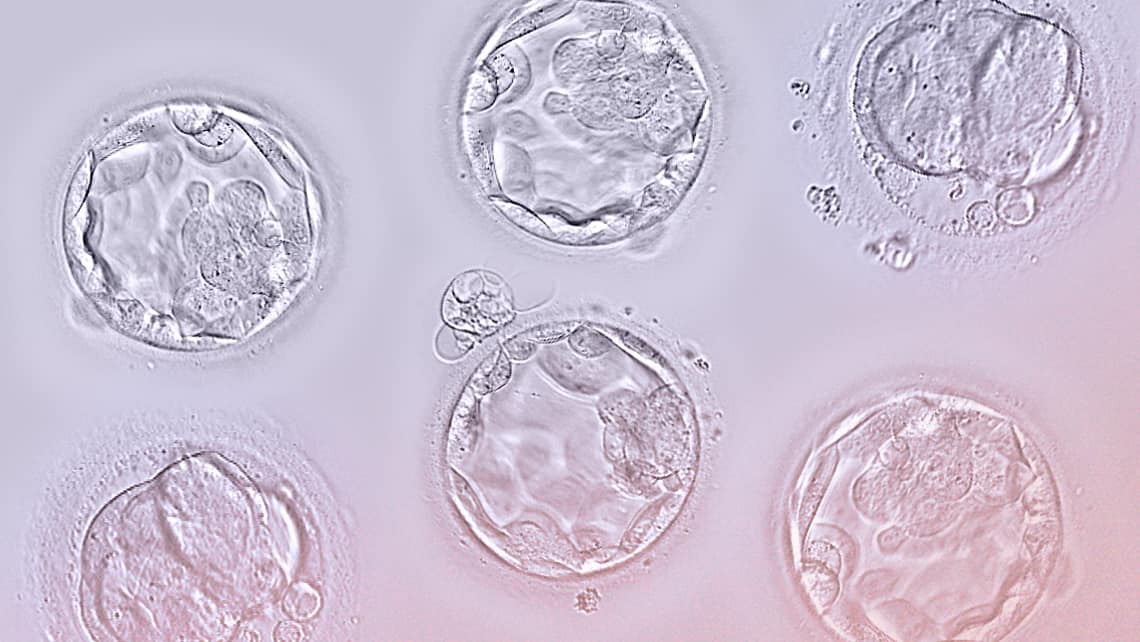
What is an embryo bank?
One of the most important milestones in the history of reproductive medicine has undoubtedly been the ability to successfully cryopreserve oocytes (eggs) and embryos. Currently, the most widespread freezing technique of choice in In Vitro Fertilization laboratories around the world is vitrification. Developing an effective cryopreservation program is essential for any Reproduction Unit. At Instituto Bernabeu we are aware of this fact and from the beginning we have had a robust vitrification program associated with an eggs and embryos bank coordinated by our qualified embryologists.
Índice
- 1 What is an embryo bank? What are the benefits of having an embryo bank?
- 2 What requirements do the clinics that manage embryo banks need to meet?
- 3 What does the Spanish law indicate about non-transferred embryos in fertility treatment? What happen to the frozen embryos?
- 4 What does the Italian law say about frozen embryos?
- 5 How does the transfer of embryos from one clinic to another take place?
What is an embryo bank? What are the benefits of having an embryo bank?
The bank is the place where the embryos are deposited for their custody and maintenance once they have been vitrified in the IVF laboratory. It is of main importance to have an embryo bank for various reasons:
- Allows cryopreservation of good quality resulting embryos from couples who have undergone assisted reproduction treatment. With the aim of using them in a new attempt if the transfer doesn’t result in pregnancy, or in the future to expand the family and complete their reproductive project.
- It enables the preservation of the embryos that have been biopsied pending the preimplantation genetic diagnosis PGD / PGT.
- It allows us to guard the embryo without a time limit in those cases in which we must delay the embryo transfer for different reasons:
- High progesterone level before transfer,
- Desire for transfer in the cycle after the stimulation has occurred.
- Risk of ovarian hyperstimulation syndrome (although its appearance is anecdotal),
- Diagnosis of an inadequate endometrium to nest the embryo or due to
- or any personal reason of the patients that conditions to postpone their transfer.
What requirements do the clinics that manage embryo banks need to meet?
Once the embryos have been vitrified, they are stored in liquid nitrogen tanks at a temperature of -196ºC. IT’s important to know that the time they remain preserved will not condition their later potential.
Security in an embryo bank is crucial so these storage conditions follow a strict temperature monitoring control.
In addition, the embryo bank must have a robust traceability system that allows its location to be quickly located and the perfect unequivocal identification of each sample. This identification is double checked using two independent computer platforms that avoid possible human error in one of the two checks. With these actions, total security and tranquility are sought for both the team involved in the bank’s management and for the patients.
What does the Spanish law indicate about non-transferred embryos in fertility treatment? What happen to the frozen embryos?
According to Spanish Legislation, there are four possible destinations patients can choose for their cryopreserved embryos:
- For their personal use (being the patient responsible for tis custody).
- Donate them for research purposes.
- Donation to other patients (embryo adoption).
- Its destruction.
In any case, the essential requirement to preserve embryos is the signing of an informed consent by the patients. With it they are informed of the technical aspects of preservation. Giving your consent on the conditions in which your embryos will remain until future use, donation of any kind or destruction.
What does the Italian law say about frozen embryos?
Italian Legislation indicates that if a couple or patient does not wish to continue with the cryopreservation of their embryos, they are declared in a “state of abandonment”. Which means that you don’t want them to continue in those conditions, but they will continue that way, even though they no longer legally belong to anyone. Therefore, they cannot be donated, nor used for research, nor destroyed.
Likewise, if a couple (marriage or common-law partner) separates or one of the two dies, all the embryos generated at the time are declared in a “state of abandonment”.
The Italian health authorities are working on the creation of a large bank that gathers all the embryos classified as “abandoned”, in order to solve the storing problem of these embryos.
How does the transfer of embryos from one clinic to another take place?
More and more couples or patients want to transfer their embryos from one clinic to another for different reasons. In these cases, the couple or patients need:
- Sign the transfer authorization at the clinic of origin.
- Both fertility clinics must have a collaboration contract in force which includes the transfer and the responsibilities derived from it.
- Transportation must be carried out by legally authorized companies.
- Likewise, the transport company must ensure the correct handling of the containers. The tanks are prepared to maintain the appropriate temperature range (-196ºC) for several days, in which it’s monitored with temperature probes or data loggers.
Both the clinic of origin and that of reception of the embryos should facilitate the process for patients, since a correct use of the embryo bank will have a positive impact on both the patients and the professionals involved.
